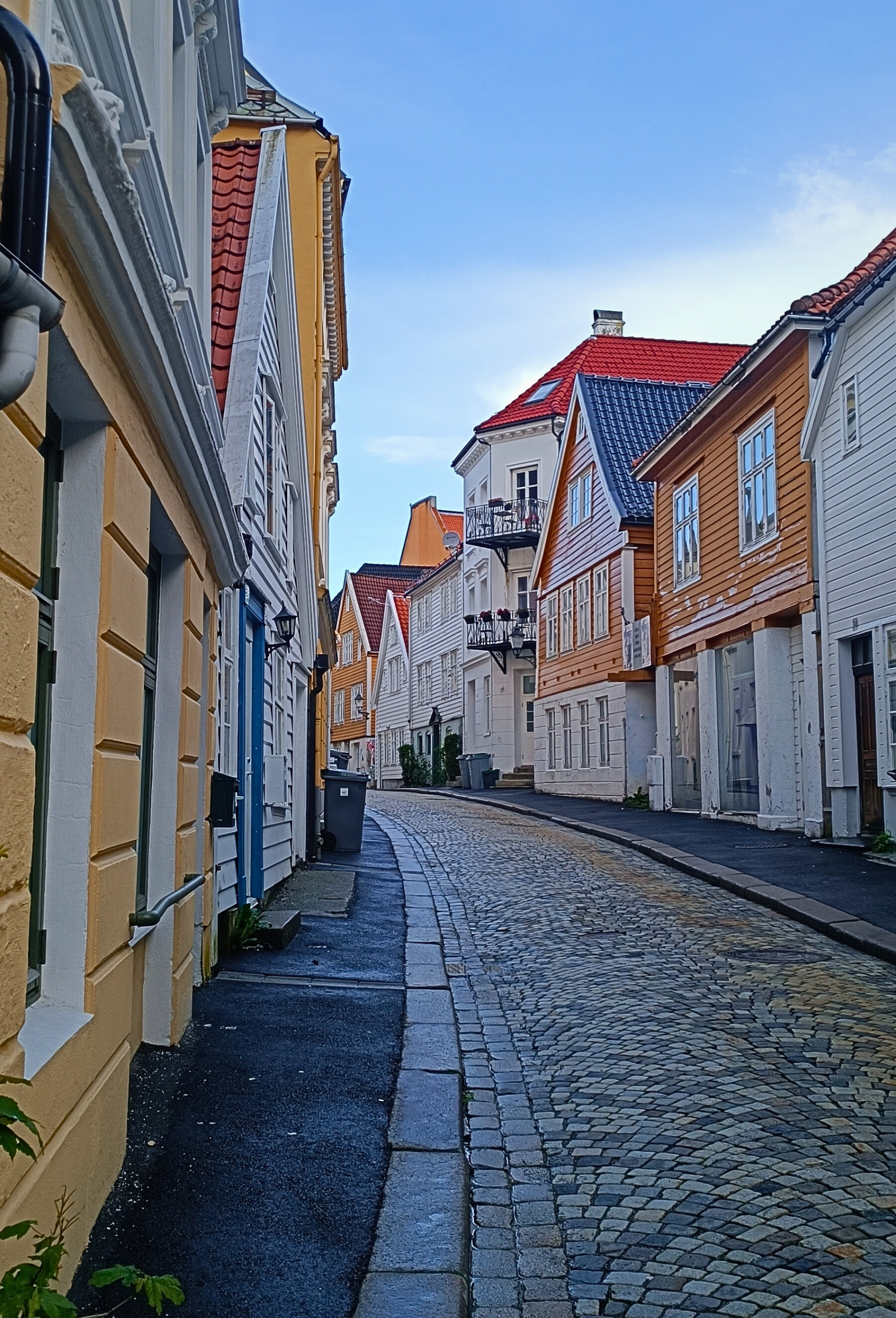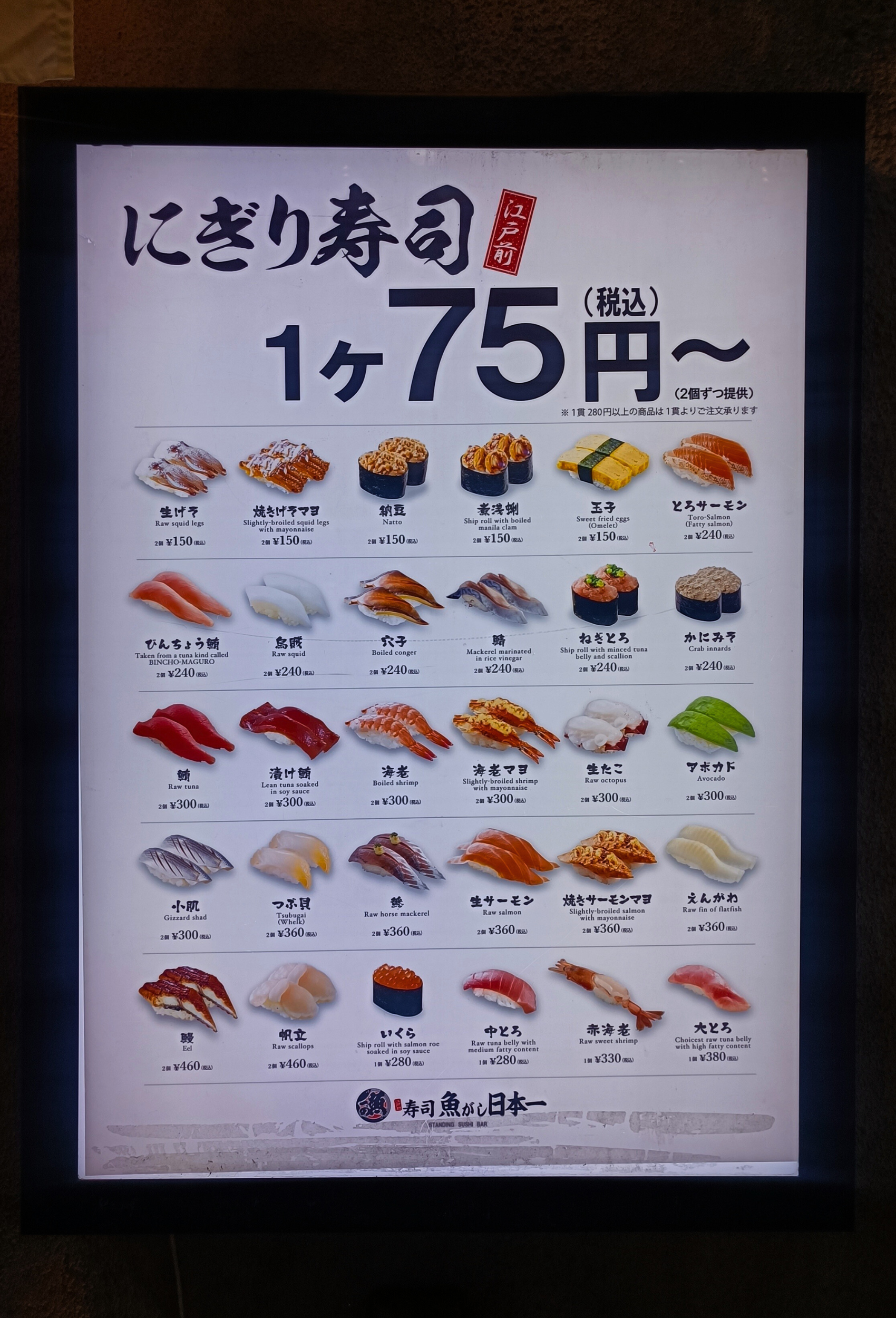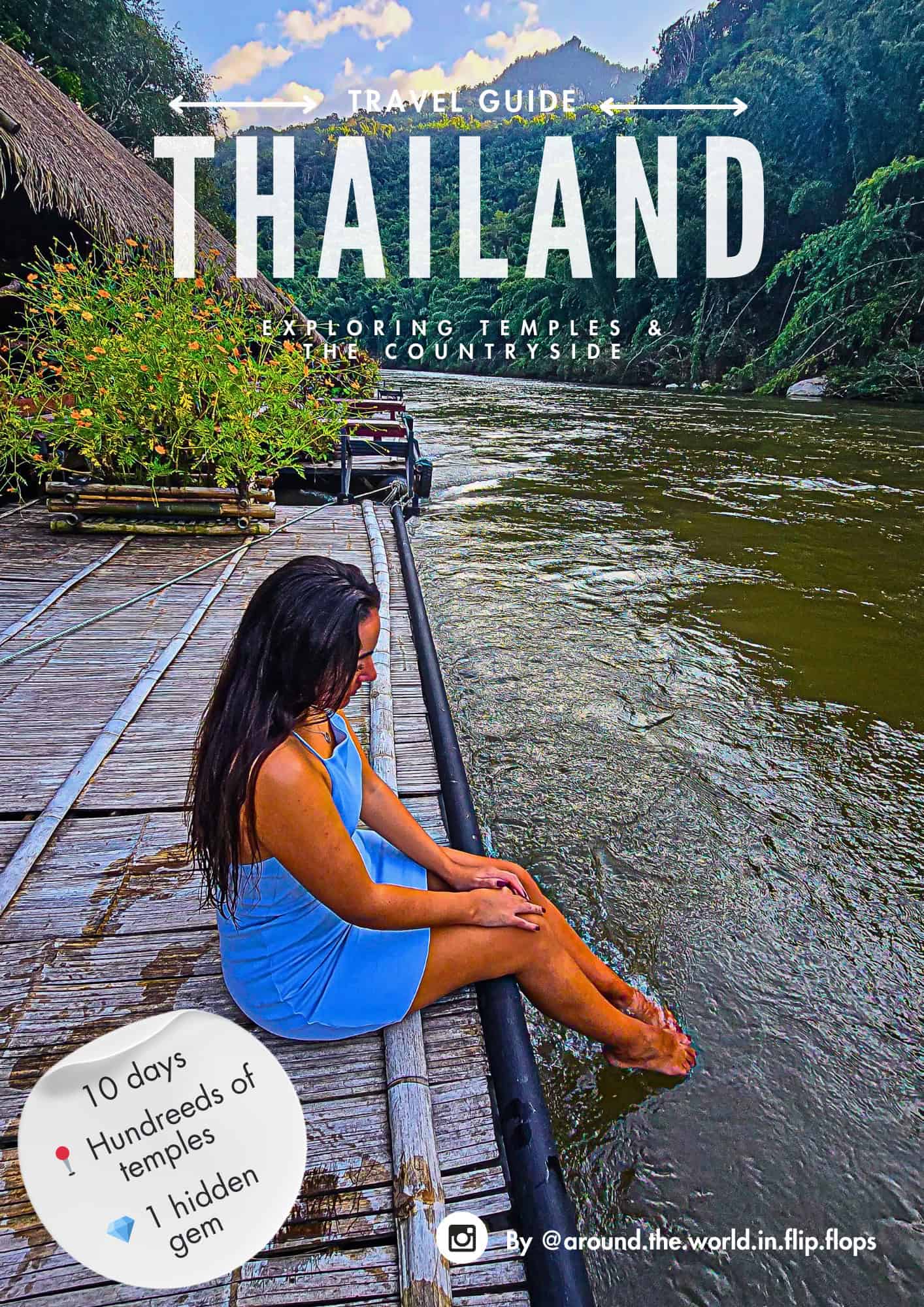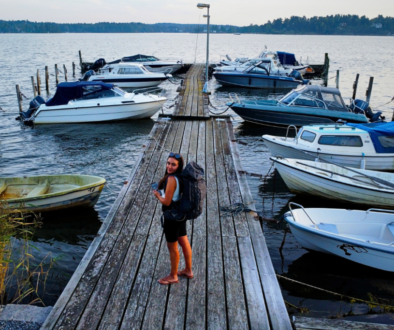How to Travel on a Budget: 7 Practical Tips That Actually Work
One of the questions I get asked the most is: “How can you afford to travel so much?”
I totally get where people are coming from. They’re wondering how I manage to visit so many countries without being rich — and honestly, I used to wonder the same thing.
Growing up, I believed travel was only for wealthy people. I thought I’d either need to win the lottery or land some high-paying job to ever see the world. But that’s not true. There’s another way.
I’ve never had a big salary or money falling from the sky — but I’ve still made many of my travel dreams come true. How? I learned to travel with very little money.
After visiting over 50 countries on a tight budget, I’ve picked up a lot of cheap travel tips that actually work. One of my biggest goals now is to prove that low-budget travel is not just possible — it’s completely achievable.
If you’re serious about exploring the world without going broke, here are my go-to budget-friendly travel tips 👇🏼
🌎 Choose cheap destinations
Let’s start with the obvious: if you want to travel on a low budget, go where your money goes further — pick cheap travel destinations.
I know, it sounds super basic. In fact, people sometimes look at me funny when I say this. But you’d be surprised how often this tip gets ignored.
I’ve made this mistake myself — choosing expensive countries and thinking I could just “budget my way through” because I’m frugal. But the hard truth is: in really expensive places, there’s only so much you can cut back.
No matter how smart you are with money, it’s a lot easier to stick to your budget in countries where costs are lower to begin with.


Expensive countries are usually gorgeous but don’t understimate how much money you’ll spend there
So if you want to travel on a low budget, your best bet is to focus on cheap countries where you can get a lot for your money.
Some of my favorite budget-friendly destinations are Thailand, Malaysia and Vietnam. I visited all three during my 8-month trip around the World and I never once regretted choosing them for my budget travel adventures!
If you’re thinking about visiting Thailand or just want to learn how to travel there on a budget, check out my free Thailand travel guides packed with tips on where to stay, what to do and how to save money along the way 👇🏼
Countries like these are not only beautiful and full of culture, but they also let you explore freely without stressing about your budget.
To give you an idea, here’s the daily average I spent while traveling in those countries:
- Thailand: 26€
- Malaysia: 19€
- Vietnam: 17€
Want the full breakdown? Check out my detailed blog post on how much I spent in each of these countries 👇🏼
READ THE FULL ARTICLE: The Cheapest Countries I’ve Ever Visited (And Why You Should Visit Too)
Of course, I used a few other tricks to keep my expenses this low while traveling in these countries. But the bottom line is: it’s only possible because these places are so budget-friendly to begin with.
🛫 Find the best flight deals
Once you’ve picked your destinations, the next big step is finding the cheapest flights to get there. Flights often take up a big chunk of your travel budget, so learning how to find the absolute best flight deals is key if you want to travel cheaply.
After booking dozens of flights myself, I swear by one website that many travelers already know: Skyscanner.
It’s my go-to for finding cheap flights quickly and easily — and it often helps me save hundreds of dollars.
Skyscanner is one of the websites I use the most to plan my trips
I’ve met plenty of people who still hesitate to book flights outside of the official airline websites.
I totally get it — I’ve been there myself. When I first started traveling, I’d check Skyscanner and see huge price differences between sites. My first thought was always: “There’s no way all of these are legit. What if I show up at the airport and don’t have a real ticket?”
If you’ve felt the same, you’re definitely not alone!
But as an experienced traveler, I can assure you that the flights you find on Skyscanner are not scams. Skyscanner simply compares prices from many trusted websites, making it easier to find cheap flights in one place.
After years of booking through Skyscanner, I’ve come to trust several sites in particular, like Trip.com, Booking.com and MyTrip.com — all reliable options for finding great deals.


I have booked flights through Skyscanner for years without a single problem
You might be wondering, “How is this related to traveling on a low budget?”
It’s actually a huge part of it. Booking flights through platforms like Trip.com or MyTrip.com is often cheaper than buying directly from the airline. I’ve honestly lost count of how much money I’ve saved this way.
Now, you might be thinking, “Okay, but isn’t it a nightmare to cancel or change flights through those sites?” — and I totally get that concern.
But let me share a quick story: I recently booked a flight to the Dominican Republic through Trip.com with free cancellation. I expected the refund process to be a hassle. But, to my surprise, I got my money back just a few days after canceling — no issues at all.
My experience has been that if you book carefully and choose the right fare conditions, using these third-party sites can be both safe and budget-friendly.

So if you’re still feeling unsure about using Skyscanner to book your flights — don’t be.
It might take a little getting used to, especially if you’ve always booked directly with airlines. But once you see how much money you can save, you’ll never want to go back.
🏡 Get Free Accommodation
Accommodation is often the second-biggest expense after flights — even in cheap countries where hostel beds can cost as little as 2€ per night. But what if you could pay nothing at all?
For low-budget travelers, free accommodation is a game-changer.
How to Find Free Places to Stay
There are several trusted ways to get free accommodation while traveling, including:
-
Couchsurfing – Stay with locals who open their homes (and couches!) to travelers for free. It’s a great way to connect with people and save money.
-
House sitting – Live in someone’s home for free while taking care of their pets and keeping the house safe while they’re away.
These platforms are popular among travelers looking for cheap travel tips that go beyond hostels.
💡 My Favorite Way to Stay for Free
While I haven’t personally tried Couchsurfing or house sitting (yet), there’s another method I use that’s been a total game-changer for my travel budget. Honestly, it’s given me some of the most authentic travel experiences I’ve ever had. Not only does it save me money, but it also connects me with locals, cultures and places in a way that typical tourist accommodations just can’t.
Finding a way to get free accommodation was such a game-changer for me
The way I get free accommodation while traveling is by volunteering in exchange for a free stay — a win-win for both travelers and hosts.
I use a platform called Worldpackers, one of the largest and most trusted websites for finding volunteering opportunities worldwide. With over 100,000 people having volunteered through them, Worldpackers connects travelers with hosts who offer accommodation in exchange for help with projects like hostel work, teaching, eco-farming and more.
When I finally decided to give it a try, my only regret was not starting sooner! Volunteering this way not only saves me money but also lets me immerse myself in local communities and gain meaningful experiences that go far beyond typical tourism.
If you’re looking for cheap travel tips that truly work, this is definitely one to add to your toolkit.
Not starting to volunteer sooner is one of my biggest travel regrets
How Worldpackers Works: Find Volunteering Opportunities Around the Globe
Getting started with Worldpackers is simple. By visiting their website or using their app, you can browse volunteering opportunities in over 140 countries — from bustling cities to remote villages.
The types of opportunities are incredibly diverse. You might find yourself helping out at a hostel, supporting an NGO or even contributing to personal projects like renovating a house or managing a farm.
Each listing includes a detailed description of the opportunity and what’s expected from volunteers. Tasks can vary widely — from housekeeping and administration to teaching, content creation and more — so there’s something to match almost every skill set.
Here is an example of a volunteering position’s requirements
What Do You Get as a Volunteer? Often More Than Just Free Accommodation
When browsing opportunities on Worldpackers, you’ll also see what’s offered to volunteers. Often, free accommodation is the baseline—and that alone can save you a lot on your travel budget.
But some hosts go even further, offering perks like free meals, guided tours or unique cultural experiences. These extras make volunteering not only a budget-friendly choice but also a chance to immerse yourself more deeply in your destination.
Here is an example of what is offered to the volunteers
How to Join Worldpackers and Start Volunteering for Free Accommodation
To apply for volunteering positions on Worldpackers, you need to become a member by paying a yearly fee. Plans start at $59, giving you unlimited access to apply for as many opportunities as you want for a full year.
I know that initial fee might stop some people from joining, but trust me — it’s more than worth it. Considering how much you’ll save on accommodation alone, plus the incredible travel experiences and connections you’ll make, it’s a fantastic investment in your journey.
If you’re ready to start your own volunteering adventure and get free accommodation around the World, click here to join Worldpackers and get a $10 discount on your yearly membership.
💰 Travel Slowly to Save Money and Experience More
This is something I severely underestimated until very recently.
For years, I traveled at a fast pace — spending just a few days in each destination and moving on quickly. I thought this was the most budget-friendly way to travel since I wasn’t staying long enough to spend much on accommodation or food.
But during my big 8-month trip around the World, I discovered the real value of slow travel. Staying longer in each place not only saved me money but also gave me richer and more authentic experiences that I hadn’t expected.


My trip around the World taught me the importance of travelling slowly
It took me some time to realize it, but slow travel — combined with other smart choices — was saving me a significant amount of money during my trip around the world.
The main reason? Moving from place to place is what really drives up your travel expenses.
What do I mean by this? Let me explain.
I kept meticulous track of every single cent I spent on my trip — how much I spent each day and on what. This helped me identify patterns in my spending.
Guess which days were always the most expensive? The travel days.
Whenever I moved from one destination to another, my daily expenses would at least double — sometimes even more — regardless of whether I was in an expensive city or a cheap country.


Travel days are always the ones ruining your budget
Once I realized that travel days were costing me way more money, I started traveling at a slower pace. Honestly, I’m convinced this shift was one of the biggest reasons I managed to keep my expenses so low during my 8-month trip around the world.
In that time, I visited 11 countries — but on several occasions, I stayed in the same country for over a month.
One major benefit of slowing down was having the time to volunteer, which saved me tons on accommodation (like I mentioned earlier). It also meant fewer international flights, which definitely helped stretch my budget even further.
After experiencing this style of travel, I realized that slow travel not only saves money but also feels way more authentic and relaxing. Since then, I’ve changed how I travel — and I can’t recommend slow travel enough for anyone looking for cheap travel tips that actually work.
💸 Don’t Waste Money on Unnecessary Fees
One thing I completely ignored for years was the annoying exchange fees I kept paying whenever I used my card abroad.
Not only were these fees frustrating, but they were also totally unnecessary. Deep down, I knew I was losing money every time I swiped my card overseas — but I avoided dealing with it because it felt too complicated.
I had no idea about international bank accounts and cards, so I felt intimidated to even look into it. That was until one day I finally did — and realized just how much money I had been wasting on hidden fees.


I wasted money on unnecessary currency exchange fees for years
If you’re still using your home country’s bank card to pay in foreign currencies, you’re making the same costly mistake I did for years. And it’s probably eating into your travel budget more than you realize.
What’s the problem with it, actually?
Let’s say you have a bank account in Europe and your money is in euros (€). Then you take a trip to Thailand, where everything is charged in Thai Baht — their local currency.
When you swipe your European bank card to pay in Baht, your bank automatically converts your euros into the local currency. But here’s the catch:
➡️ The exchange rate your bank uses usually isn’t in your favor
➡️ On top of that, they often charge hidden fees — foreign transaction fees, currency conversion fees, ATM withdrawal charges… the list goes on.
This is exactly what was happening to me. After every trip abroad, I dreaded checking my Swedish bank account because I knew I’d lost more money than I should have — just because I postponed getting an international bank card.
💳 How to Avoid Hidden Fees While Traveling: Use a Travel-Friendly Bank Like Revolut
So, how do you solve the problem of losing money to bad exchange rates and hidden fees?
Simple: Open an international bank account designed for travelers.
The one I use — and highly recommend — is the world-famous Revolut.
So many budget travelers already use Revolut, but in case you haven’t heard of it or have been hesitant to try, I had to include it here. It’s honestly been one of the biggest game-changers for me when it comes to managing and saving money while traveling.
With Revolut, you can:
-
Hold and manage multiple currencies in one account
-
Exchange currencies in the app at real market rates
-
Avoid hidden fees — any fee they charge is clearly shown before you confirm a transaction
-
Get access to budgeting tools and instant spending notifications
🍜 Research and Save Cheap Places to Eat on Google Maps
This is one of those budget travel tips I stumbled upon years ago in an article — and I’ve never forgotten it since.
At first, it might seem trivial or like something that wouldn’t really impact your overall travel expenses. But trust me: that couldn’t be further from the truth.
This simple habit has saved me a surprising amount of money on my trips — all while helping me discover great local food and avoid overpriced tourist spots.


This simple tip helps me save money on every trip I take
So, here’s exactly what I do: before any trip, I take some time to research the best cheap restaurants in the places I’m visiting.
I usually start by checking Google, Tripadvisor and local blogs to find spots with great reviews, affordable menus and mouthwatering food photos. When I come across a place that looks both budget-friendly and delicious, I save it to my custom Google Maps list.
As you can see in the images above, I’ve created a dedicated list called “Restaurants” on Google Maps. This way, I always have a go-to collection of cheap eats ready to access, even when I’m offline.


I’ve researched and saved hundreeds of restaurants around the World
By pinning good and affordable restaurants on Google Maps ahead of time, I avoid one of the most common travel budget traps: overpriced tourist food.
Because let’s be honest — when you’re walking around hungry in an unfamiliar city with no idea where to eat, you’ll probably just grab the first thing you see. And chances are, you’ll end up paying too much for an underwhelming meal in a place that caters more to tourists than to locals.
But with my Google Maps lists ready, I simply open the app, check which cheap restaurant is nearby, and head there — no stress, no guesswork.
Practical, right?
And I didn’t stop at just restaurants. I also created lists for:
-
Cafés (perfect for cheap breakfasts or getting work done)
-
Supermarkets and local markets (because yes, groceries are often way cheaper than eating out — and every cent counts when you’re traveling on a budget)
If you want to travel cheap and smart, having these go-to spots saved in advance can make a huge difference in both your wallet and your experience.
📱 Track Every Cent: The Best App to Manage Your Travel Budget
Keeping track of your expenses while traveling might feel a bit scary — and honestly, I totally get it. It can be daunting to write down every cent you spend and literally watch your money disappear.
That’s probably why most travelers skip this step. Some find it overwhelming, and others simply don’t realize just how important it is.
But after visiting over 50 countries, and only recently starting to track my travel expenses, I finally understood how crucial this habit is. Especially if you’re trying to travel on a low budget.
That’s why I had to include it in this post. It may not sound exciting, but it’s one of the most effective and eye-opening budget travel tips I can share.


Tracking my expenses while travelling has been a game-changer for me
The reason I’m so convinced that tracking your expenses while traveling is crucial is simple: it keeps your budget front and center.
If you’re serious about traveling on a budget, the last thing you want is to get caught up in impulsive small purchases that quietly add up to a huge amount. By keeping track of every single cent you spend, you make sure you don’t lose control of your budget.
What I’ve learned is that it all comes down to awareness.
When you know exactly where your money is going, it’s much easier to feel in control. On the other hand, if you just spend without tracking, you’re basically flying blind — and that rarely helps when you’re trying to keep costs low.
The budget-tracking app I rely on during my travels is called TravelSpend. Honestly, I can’t imagine traveling without it anymore. They offer both a free version and a paid upgrade. I’ve found that the free version works perfectly for me.
Give it a try — I promise it’ll help you stay on top of your spending and travel smarter!
I hope this blog post helps you travel more while spending less.
Everyone is looking for a secret hack, but the truth is that there’s no magic formula. What really matters is having the willpower to make it happen, the discipline to stay on track and a set of proven budget travel tips to guide you along the way.
With these in hand, you can enjoy smarter, more affordable travel — and create amazing experiences without breaking the bank!
DO YOU WANT TO HELP THIS PROJECT? USE THE LINKS BELOW AND I’LL GET A SMALL COMMISSION THAT REWARDS MY WORK 👇🏼
- Skyscanner: Flight deals 🛫
- Booking.com: Hotels, flights & car rentals 🛏️
- Hostelworld: Hostels around the World 📍
- AirHelp: Get paid for a delayed or cancelled flight💰
- Airalo: Get an Esim 📱
- Omio: Book transportation 🚆
- 12goAsia: Book transportation in Asia 🚌
- Trip.com: Flights, hotels, car rentals & transfers 💰
- Get Your Guide: Tours & entrance tickets 🎫
- Tripadvisor: Find other travelers’ opinions ✍🏼
- Rental Cars: Rent a car for your trip 🚗
- Discover Cars: Get up to 70% discount on car rentals 💰
- Revolut: The best international card 💳
- Surfshark: Stay safe online (86% discount & 3 extra months for free) 💻
- Klook: Get 8% discount on Klook with my FLIPFLOPS Promo Code 🤑
- IATI Insurance: Get 5% discount on your travel insurance 🔒
- Worldpackers: Voluntering opportunities in more than 140 countries 🌎
- Viator: Tours & activities anywhere in the World 🎟️
- Osprey: The best backpacks 🎒
- LARQ: Self-cleaning bottles that kill viruses and germs 🦠
- TravelSpend: 50% discount on the best budget-tracking app 💰














